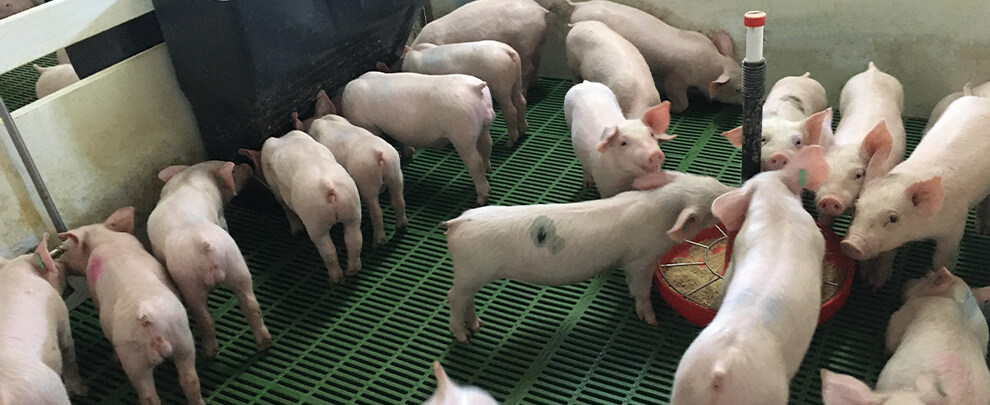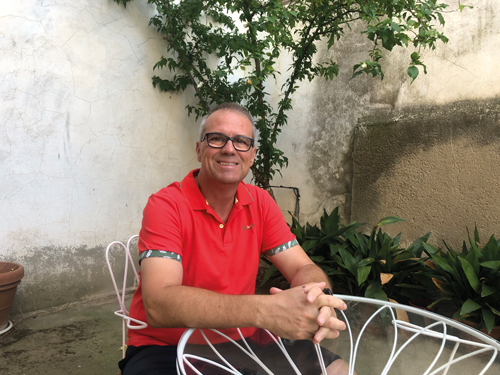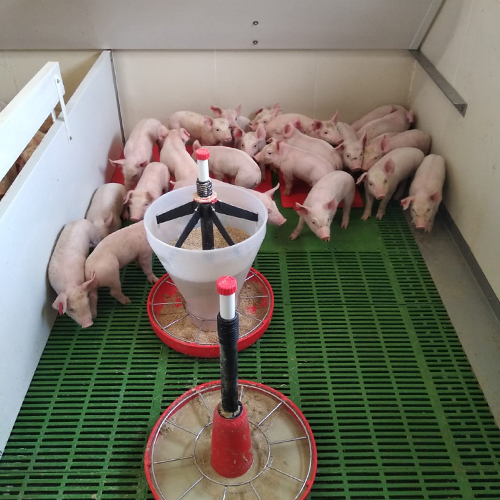Blog
Blog

A year without zinc oxide on our farms
28 of September of 23 - News
On June 26 was one year since the European Commission withdrew commercial authorisations of veterinary medicines and medicated feed with zinc oxide (ZnO) effectual, which had been used since the 90s to prevent post-weaning diarrhoea of piglets and promote their growth. Since then, pig farmers have faced the challenge of finding alternatives to using zinc oxide to maintain an outstanding sanitary status. We discussed these issues with Albert Finestra, veterinarian at Finestra Veterinarians Advisers.

Albert Finestra, veterinarian at Finestra Veterinarians Advisers. Photo: A. Finestra.
What are the main reasons why the use of zinc oxide has been restricted?
Basically, for an environmental reason. Zinc oxide is a mineral of low absorption, so the one received by the animals accumulated in the manure and, subsequently, contaminated the soil and groundwater. Given this situation, and after evaluating the benefit/risk ratio of this medicine and concluding that the benefits of the use of zinc oxide are not more significant than the risk it poses to the environment, the authorities decided to impose the reduction of its use to avoid an excess of this mineral.
Does the pork sector have sufficient alternative tools to manage without zinc oxide while minimising the damage that may arise during the process?
We have the necessary tools but must find the right one for each situation. Zinc oxide allowed us to treat different problems with a single solution, which was one of the most used options. Now, on the other hand, we must look for additional tools and evaluate the effectiveness of each of them since one of the significant problems that arise is that there is no specific tool that has replaced zinc oxide, but there are different tools that must be combined to try to achieve the same results.
What are the alternative tools available to farmers?
The first and, from my point of view, the most important, is nutrition. The specialists in this field have designed formulas with the necessary specifications to be able to supply what zinc oxide offers. In this sense, work has been done on improving protein quality and seeking a better one. On the other hand, we also have farm management guidelines, such as enhancing temperatures, ensuring water quality, reviewing feeding systems, etc. In the end, all these tools are still a set of actions that, not being able to use zinc oxide, must be considered much more than before.
If we focus on food, what can be done about this restriction?
We can try to adjust the feeding systems, the hoppers, so that the animals eat slowly, not gorge, to avoid excess protein throughout the digestive process. One of the most important concepts is giving them small amounts, but several times a day. On the other hand, it is vital to have clean silos and avoid the appearance of fungi. You must have the feeding system prepared to restrict flow, if necessary.
What has been the economic impact of this measure on farms? How has the cost/benefit ratio changed?
If we look at the second half of 2022 when the use of zinc oxide was restricted, we see that there has been a worsening health, but I do not think it is due exclusively to this limitation. Other factors have also greatly influenced, such as the proliferation of highly pathogenic strains of PRRSV and the prudent use of antibiotics. These factors have worsened the health of pig farms in our environment, and consequently, there has been a negative economic impact. Regarding the cost/benefit ratio, we must remember that using zinc oxide was a very cheap option, and our choices now are more expensive. Therefore, the cost of production increases and the profit decreases.

It is important to have good environmental conditions. Photo: Rotecna.
Focusing on the piglet, what does it mean not to be able to be treated with zinc oxide?
Zinc oxide was used to control post-weaning diarrhoea in piglets, although the truth is that its inner workings have never been entirely clear. Zinc oxide coated the intestinal wall and prevented toxins and pathogenic bacteria from adhering to the intestine while favouring the absorption of nutrients. Thus, the intestinal integrity of piglets has been affected by not being able to administer zinc oxide. This has resulted in more diarrhoea, incidences, and endemic problems during weaning. All this has led to worse performance and growth of piglets and the need to treat them with more antibiotics to solve some problems.
What role does vaccination play in this situation?
There are oral vaccines that aim to prevent the proliferation of pathogenic bacteria in the digestive system of piglets. These vaccines can prevent pathogens from attaching so quickly to the digestive system of animals. Therefore, with vaccines, we can achieve a certain degree of immunity and solve, in the short term, what zinc oxide previously did.
Can a holistic approach help to deal with zinc oxide withdrawal? In what way?
Yes, it can help. As we have seen before, we could apply a fixed dose of zinc oxide, and in that way, we solved many problems. Now, however, we must use a holistic approach to each farm; different solutions must be adopted since there will be farms that, for example, by administering an adequate nutrition formula, will be able to supply zinc oxide and will not present any problems, while in others more measures may have to be applied. Among other issues, we must pay attention to the microbiological and physicochemical quality of water, something essential that farmers have increasingly assumed but that we still need to improve. On the other hand, we must adjust the handling and try to have much better environmental conditions than before, with fewer variations in temperatures, air, humidity, etc. Ultimately, the set of solutions will depend on the reality of each farm.
What challenges do farmers now face in the face of the impossibility of using zinc oxide?
The challenges are growing. If before weaning piglets was more straightforward, now it has been complicated from the digestive point of view. If you add to that respiratory, meningitic or nervous processes, the problems could increase in this phase. Therefore, the main challenge would be to work better weaning. In addition to zinc oxide, another challenge facing the pork sector is the reduction of the use of antibiotics, something that will probably increase. Indeed, there will also be new restrictions in environmental terms, as reducing ecological impact remains one of our priorities. As we already know, pig farming generates a series of droppings that, if used correctly, can be profitable. However, the problem in many cases is that the territory is not balanced with the agriculture of its surroundings in terms of the number of animal places. Faced with this situation, the challenges are increasing.






